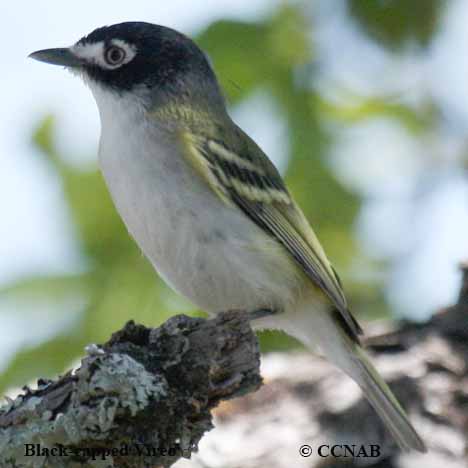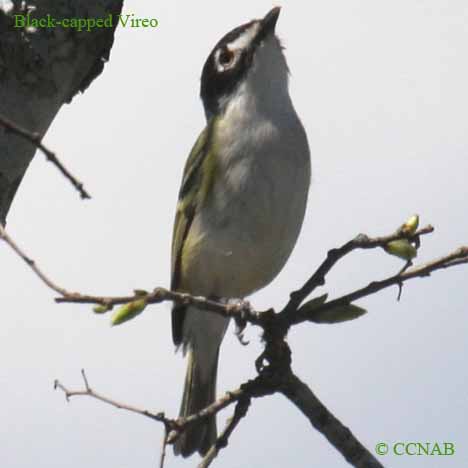North American Bird Search Box
This search box can be used to find bird species using bird's english, french or latin name, or to identify bird by its 4 letter Alpha Code
Field Guide for all the Birds of North America
Black-capped Vireo
4 Letter (english names) Alpha Code: BCVI (2)
Viréo à tête noire
Vireo atricapilla
Information, images and range maps on over 1,000 birds of North America, including sub-species, vagrants, introduced birds and possibilities

Species: The Black-capped Vireo (Vireo atricapilla) is one of the smaller vireos seen in North America and is mostly found in southern Texas and into Mexico. This very attractive vireo is an endangered bird, who finds its habitat in rocky hills, living in scrub oak and undergrowths. The bird's decline is thought to be caused by parasitism by the cowbirds, which lay their own eggs in the vireo's nest. This small active warbler-type bird feeds mostly on insects.
Distinctions: Among all the vireo species, the male and female can be identified separately. Both sexes have white lores and white spectacles, whereas, the male has a dark crown, nape and cheeks and the female has a gray crown, nape and cheeks. Both have olive green bodies, two yellow wing bars, greenish-yellow flanks, white throat, breast and undertail. Both sexes have dark primaries and tail.
Voice: Nasal sounding, similar sounds to other vireo types, multiple call notes. Sings throughout the day even after breeding season.
Nesting: Three to five white eggs, as many as two broods per year. The cup-shaped nest is suspended from a fork in branches of a small tree or bush. The nest is composed of strips of wood bark, plant fibres and lined with fine grasses and spiderwebs.

Life, Habitat & Pictures of North American Vireos
| B L | W W | W | Family | Latin Name |
|---|---|---|---|---|
| 4.5" 11.4cm | 7" 17.8cm | 0.3oz 8.5g | Vireonidae | Vireo atricapilla |
North American Birds Calls
- Click here
- Summer
- Year Around
- Winter

Distribution: The Black-capped Vireo is restricted to a small area in North America. There is a small population in Oklahoma and the largest numbers are found in central regions of Texas. These vireos also have a breeding range in Mexico. They spend their winters along Mexico's Pacific coast.
Reference to Other Bird Site:
ABA - American Birding Association This site represents an organization that maintains official records of all birds species that have been proven to have been seen inside the perimeters of the North American Continent and the surrounding bodies of water. Regular revised versions are posted to keep the bird list current at all times. This is the list used by all serious birders over their lifetime. You may be aware of the movie called the "Big Year". It was with this list that all the competing birders used in an attempt to set a new record as to how many bird species that could be seen by an individual birder in one calendar year.

